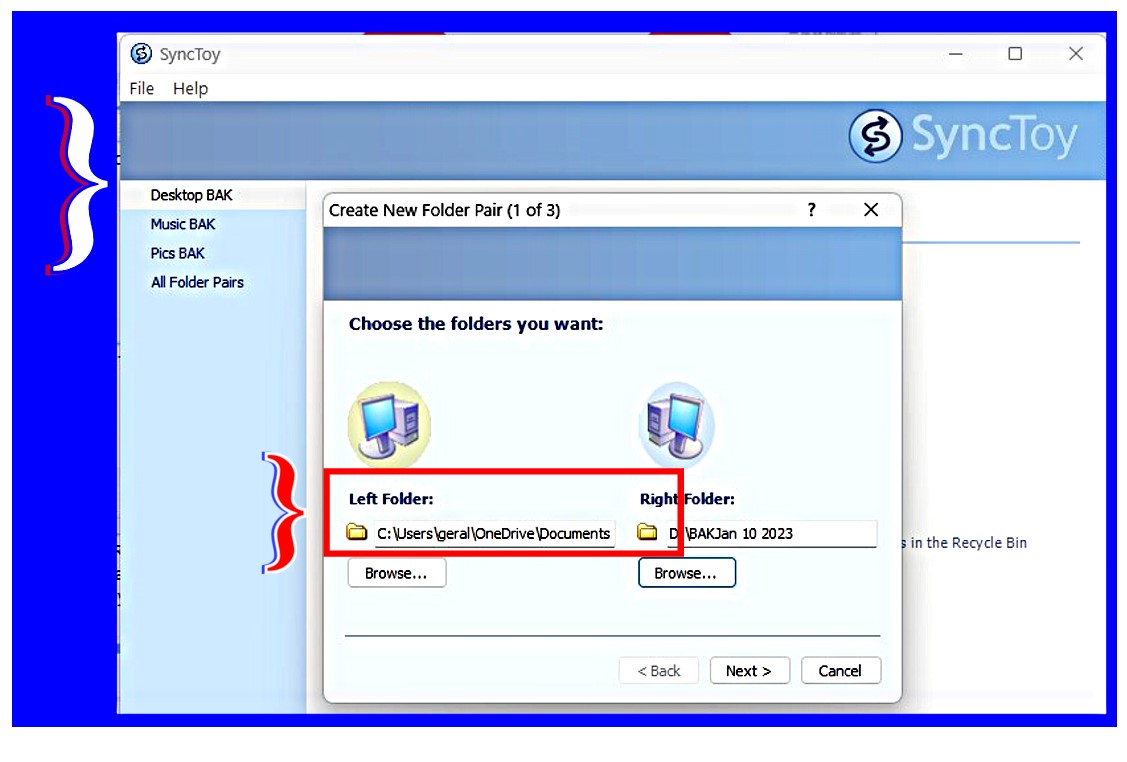The OneDrive Conundrum Solved — Chapter 3:
Experience the Oneness of the OneDrive
Confusions Say
I have experienced the Oneness of the
OneDrive
I doth sayeth it doth sucketh
On of the recurring plotlines of
Star Trek: Next Generation, and all the succeeding
sequels, was the ongoing battle with The Borg. The Borg were a race of
half-human — half-machine, and whose sole purpose was to absorb and assimilate
to the Bork Collective an ever growing number of worlds and civilizations; their populations,
large and small; and any poor single spaceguy or spacegal stuck out
there on own their own. For The Borg, the situation was simple:
Resistance is Futile. Such has been my feeling since working with
this OneDrive Conundrum.
ever growing number of worlds and civilizations; their populations,
large and small; and any poor single spaceguy or spacegal stuck out
there on own their own. For The Borg, the situation was simple:
Resistance is Futile. Such has been my feeling since working with
this OneDrive Conundrum.
Windows users have always had to perform their own file management
chores. My observation has always been that a person's Windows
File management was a fine assertion of self: It's my computer.
I will make it the way I want.
The amount of work that might entail will vary from
user to user. Experienced Windows users all have their own idiosyncratic file and folder
schema.
No matter the personal contours,
this long standing Windows schema began with
C:\Users\USERNAME\Documents.
I, personally, have yet to meet the long time Windows user who says,
Yes. Take my documents, please!
And stick those precious files, here.
C:\Users\USERNAME\OneDrive\FolderName.
Nonetheless, here we are.
In
the previous post, I demonstrated that if you are a
user of a backup Application, like SynchToy, you might be
backing up
the wrong folder. Since this change is a global default system change, I
have found several instances where Windows simply defaulted to
C:\Users\USERNAME\OneDrive\FolderName.
One such
unknown change that did occur was with my SynchToy configuration.
I understand now why. The Documents folder icon had
changed from the default to a simple plain yellow manila file folder
icon. I had noted this change in the last posting.
Prior to all this investigation, I simply assumed the Documents icon
meant the documents folder.
In SynchToy, clicking on the
Documents path, revealed that indeed the backup I had configured in
September was wrong. Sum
bitch!

Now, for me, this wasn't the end of the world; I can easily reconfigure the
backups in SynchToy. Not so easy for my clients, though.
Still, knowing what had happened, and how, made the next step intuitive
to me. To begin to take back control of your file management
chores, the first step is to change the icons for the folders located at
C:\Users\USERNAME\Documents
back to what they used to be; and change the folders' icons located at
C:\Users\USERNAME\OneDrive\FolderName to the plain yellow icons.
This is done through the Properties Dialog box for each folder.
Right click the Folder. Click Properties. Click the
Customize tab. Click Change Icon.
![]()
![]()
Once you click the Change Icon button, a whole new world of icons will be available to you. My demonstration will change the Documents Folder icon. Below I changed the plain manilla yellow folder to the snazzy Windows 11 folder icon.
![]()
![]()
You can repeat this process to change the icon for each folder in
C:\Users\USERNAME\FolderName to a snazzy new icon.
Try it for Pictures. That one is kinda fun — if this is your idea of a
good time.
The final step here is to change the icons for
folders located at C:\Users\USERNAME\OneDrive\FolderName
to plain manila icons. After you complete this task for all
folders which you might wish to apply this to, your folder icons will
make much more sense. And your File Management chores won't be
that much more challenging than they were before.
![]()
Those folders in the C:\Users\USERNAME\OneDrive\FolderName can be made to look and appear different than the new (old) default folders. If you take the time to this to all the folders you use and wish to remain as they were, when you see all your folders on your C:\ drive it will be more clear which are OneDrive folders and which still belong to their original owner. There is one change to the Windows folder schema. The Desktop is now always and only located within the OneDrive.
![]()
Now why has Microsoft made this seemingly ridiculous change that only
seems intended to add to its customers' frustration and confusion.
On
February 13, 2022, I introduced readers of The
Dispatches From the Front to the concept of "Zero Trust."
Microsoft is one of the major vendors pushing Zero Trust as a structural
framework under which all computing is performed. One main tenet
within Zero Trust framework is that "The Network has no boundary." Or, as like
to say: There is only one network and we all connect to that network.
At its most basic, any destination point on the network that users
can access can be considered "a drive." Many types of Information
can be stored and retrieved at this network location — maybe we call it
"a website." And we can link our "Local Drives" installed on our
computers to these outbound "Network Locations," or drives located at a
webserver. So I believe that Microsoft is extending the One
Network analogy to all drives in Windows. Thus, there will eventually
be "One Drive" on your computer linked to a file depository not
under your control. They call that the cloud. Peachy.
For now, change your icons — I guess. And pay closer attention
— I suppose.
Now, let's all take a deep breath, and repeat after me.
Aw
Jeez